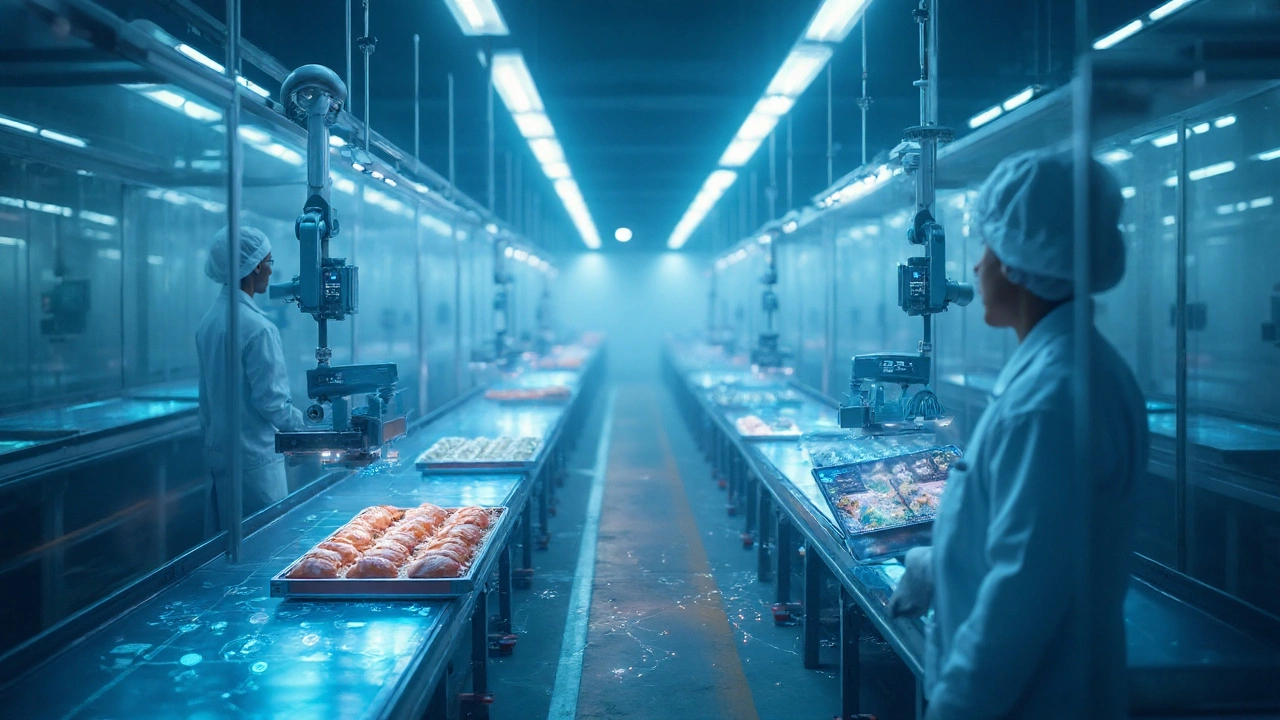HACCP: Food Safety System Explained with Real-World Examples
When you eat a sandwich from a café or order sushi from a restaurant, you’re trusting that someone followed strict rules to keep you safe. That’s where HACCP, a systematic approach to identifying and preventing food safety hazards before they happen. Also known as Hazard Analysis and Critical Control Points, it’s not just paperwork—it’s the backbone of how food is made safe for millions every day. You won’t find HACCP in your kitchen at home, but you’ll see it in every commercial kitchen, factory, and grocery distribution center that handles food for sale.
HACCP isn’t about reacting to sickness outbreaks—it’s about stopping them before they start. It breaks food safety down into seven steps: identifying biological, chemical, or physical dangers (like salmonella or metal shards), figuring out where those dangers can be controlled (called critical control points), setting limits for safety (like cooking chicken to 74°C), and keeping records. It’s used by restaurants, meal delivery services, baby food makers, and even large-scale farms. The system doesn’t care if you’re a small bakery or a global supplier—if you sell food, you need HACCP. And yes, health inspectors check for it.
What’s interesting is how HACCP connects to things you might not expect. For example, if you’re taking antibiotics and your doctor warns you not to drink grapefruit juice, that’s a drug interaction. HACCP handles similar risks—but for food. Think of it like a checklist for danger: when does contamination happen? How do you stop it? Who checks it? That’s why you’ll find HACCP referenced in posts about medication safety, like how oseltamivir interacts with other drugs or how calcium supplements clash with bisphosphonates. The same logic applies: identify the risk, control the point, verify it works. In food, that might mean checking the temperature of a fridge every hour. In medicine, it’s timing when you take a pill. Both are about control, not luck.
You won’t find HACCP in a pharmacy, but you’ll find its spirit everywhere food and medicine overlap. That’s why posts here cover everything from simethicone safety during breastfeeding to how diclofenac gel affects your skin. They all ask the same question: how do we make something that helps you not hurt you? HACCP answers that for food. And if you’ve ever wondered why your takeout container says "stored at 4°C" or why your sushi chef wears gloves, now you know—it’s HACCP in action.
Below, you’ll find real-world guides on how medications interact, how side effects show up, and how to manage risks in daily health routines. The same careful thinking behind HACCP is behind every post here. No fluff. Just clear, practical steps to stay safe—whether you’re eating, taking pills, or caring for someone who is.

How the Food Industry Prevents Salmonellosis: Key Practices & Impact
- Sep, 24 2025
- 20
Explore how the food industry tackles salmonellosis through safety systems, tech controls, traceability, and consumer education. Learn real‑world practices and future trends.
Categories
- Health and Wellness (51)
- Medicine (36)
- Health and Medicine (25)
- Women's Health (9)
- Mental Health (8)
- Men's Health (7)
- Beauty and Wellness (4)
- Health Information (4)
Archives
- December 2025 (14)
- November 2025 (25)
- October 2025 (27)
- September 2025 (14)
- August 2025 (3)
- July 2025 (2)
- June 2025 (2)
- May 2025 (3)
- April 2025 (4)
- March 2025 (4)
- February 2025 (2)
- January 2025 (3)
- online pharmacy
- medication safety
- dietary supplement
- health benefits
- dietary supplements
- prevention
- fertility
- online pharmacy Australia
- treatment
- treatment options
- benefits
- connection
- drug interaction
- drug interactions
- pregnancy
- Cancer Treatment
- depression medication
- antidepressants
- quality of life
- anxiety treatment
